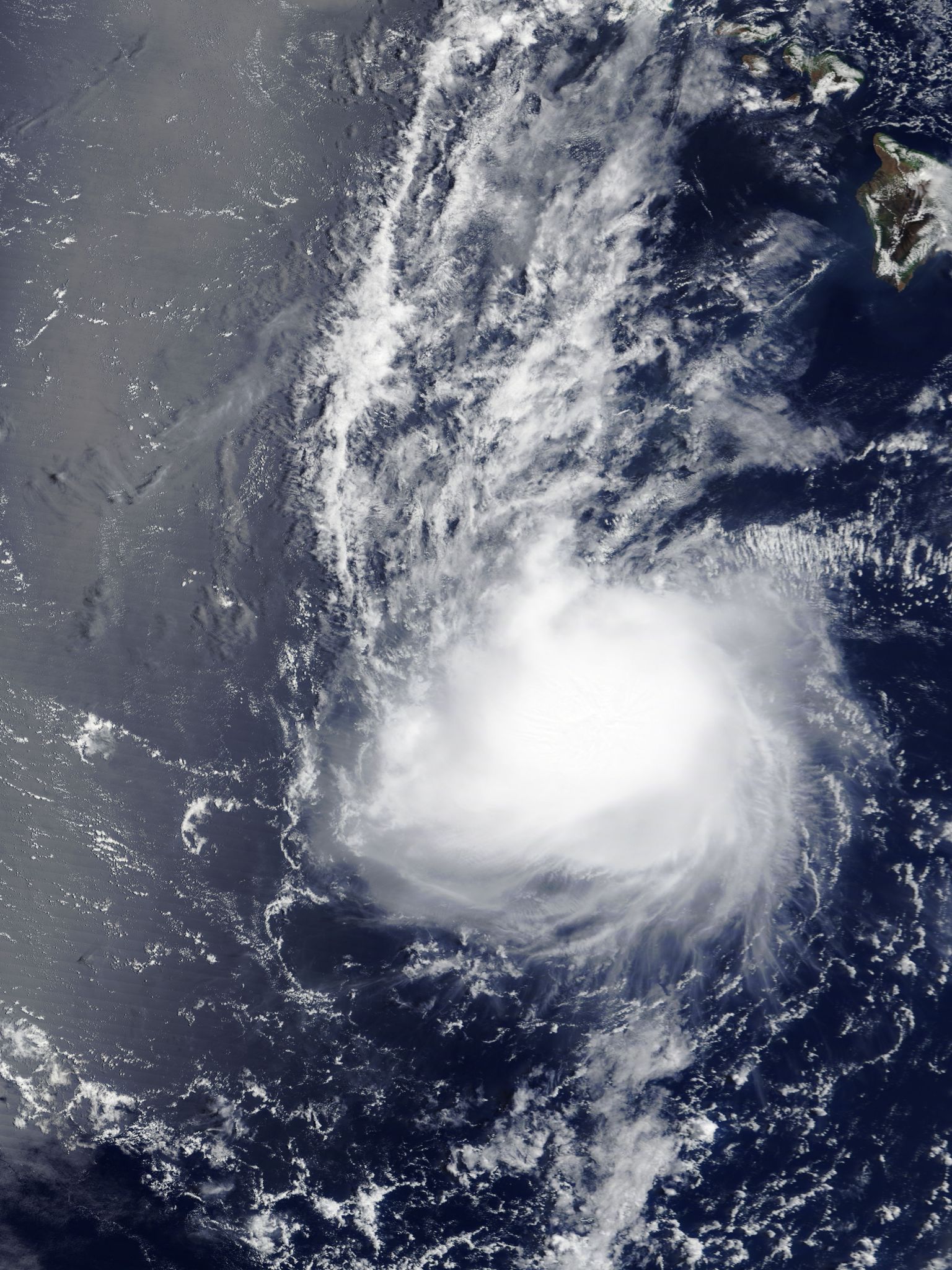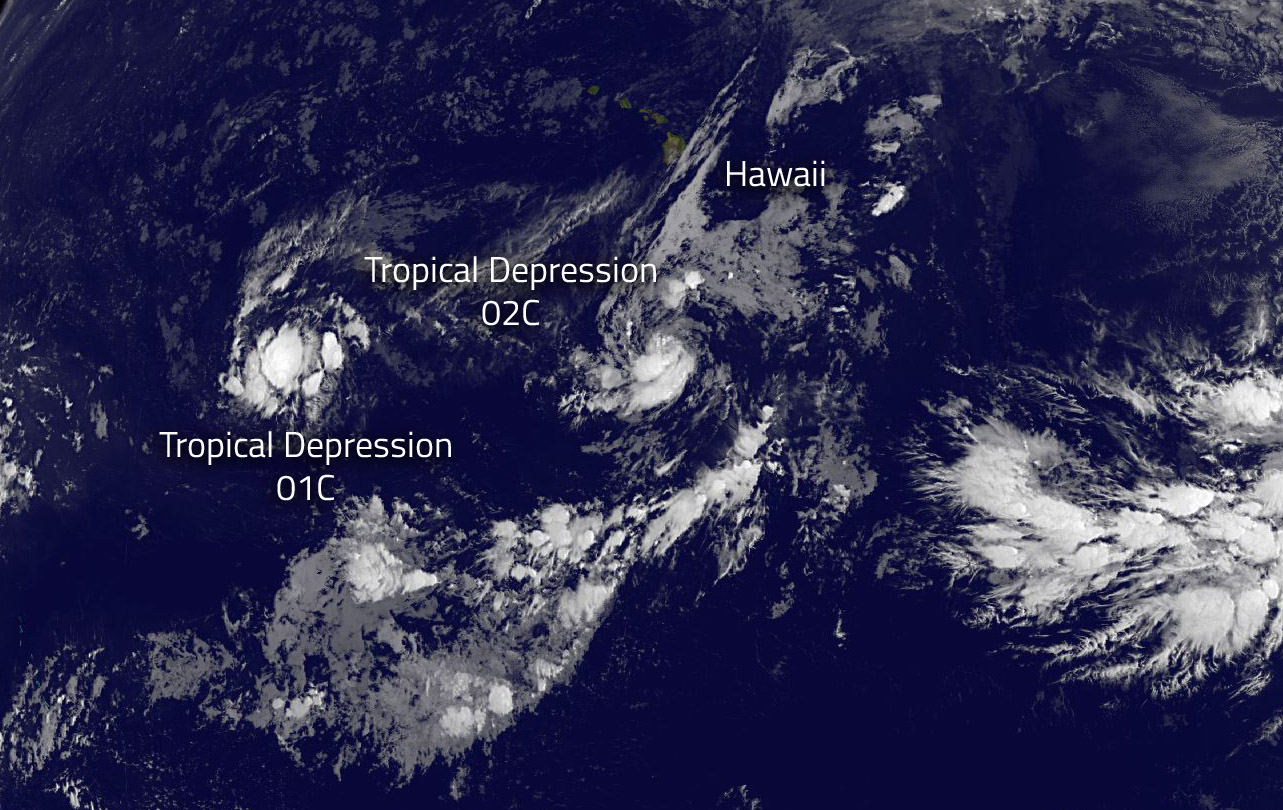Iune (was 02C -Central Pacific)
Tropical Storm Iune has weakened to a depression south of Hawaii on July 13. NASA’s Terra satellite passed over Iune when it was a tropical storm, before dry air started affecting the system.
When NASA’s Terra satellite passed over Tropical Depression Iune on July 11 at 21:40 UTC (5:40 p.m. EDT), the MODIS instrument captured a visible-light image that showed the storm appeared elongated.
At 0900 UTC (5 a.m. EDT) on Monday, July 13, 2015, the center of tropical depression iune was located near latitude 14.4 north and longitude 162.8 west. That puts the center about 570 miles (915 km) south-southwest of Lihue, Hawaii, and about 475 miles (760 km) east-southeast of Johnston Island. The depression was moving toward the west near 10 mph (17 kph) and this motion is expected to continue through system dissipation in the next 36 hours.
Maximum sustained winds are near 30 mph (45 kph) with higher gusts. Iune is expected to become a post tropical remnant low later today, July 13. The estimated minimum central pressure is 1008 millibars.
Forecaster Powell noted that Tropical Depression iune remains devoid of deep convection (strong thunderstorms) and dry air has been wrapping into the system. The low-level center of circulation is well-defined with warm-topped cumulus clouds wrapping through all quadrants,” as seen in the MODIS image.
Iune is forecast to dissipate by July 15.
Rob Gutro
NASA’s Goddard Space Flight Center
July 10, 2015 – Satellite Shows Newborn Tropical Depression 02C Form in Central Pacific
NOAA’s GOES-West satellite saw that Hawaii is in the middle of a triangle of tropical cyclones. Tropical Depression 02C formed over 700 hundred miles south-southeast of Hawaii on July 10.
There are three tropical cyclones in the Central Pacific Ocean and Hawaii is in the middle of them. On July 10, newborn Tropical Depression 01C was west of Hawaii, while newborn Tropical Depression 02C was south of the Big Island. Post-Tropical Depression Ela was fizzling northeast of Hawaii.
NOAA’s GOES-West satellite provided an infrared image of the newborn depression that showed bands of thunderstorms from the west of center, wrapping south to east of the center of circulation. The image was created from NASA/NOAA’s GOES Project at NASA’s Goddard Space Flight Center in Greenbelt, Maryland
At 5 a.m. HST (11 a.m. EDT/1500 UTC) the center of Tropical Depression Two-C (TD2C) was located near latitude 11.4 north and 155.2 west. That puts the storm about about 705 miles (1,135 km) south-southeast of Honolulu Hawaii and about 575 miles (920 km) south of Hilo, Hawaii. TD1C was moving toward the northwest near 6 mph (9 kph) and is expected to turn to the west on July 11.
NOAA’s Central Pacific Hurricane Center noted that maximum sustained winds were near 35 mph (55 kph) with higher gusts. The depression is expected to reach tropical storm strength later today. The estimated minimum central pressure is 1005 millibars.
Rob Gutro
NASA’s Goddard Space Flight Center





























